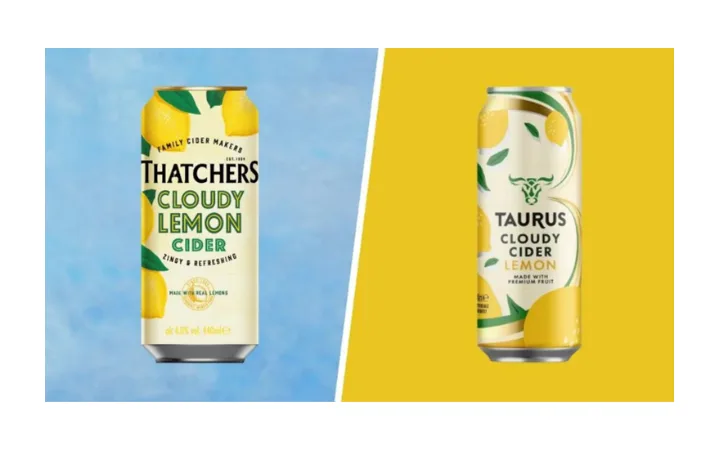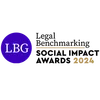The Court of Appeal has handed down a decision which will be welcomed by many brand owners who face what they see as unfair practices by supermarkets producing lookalike products. #
The Court of Appeal has upheld Thatchers' appeal and overturned the decision of the Intellectual Property Enterprise Court (“IPEC”) rejecting Thatchers’ claims of trade mark infringement and passing off against Aldi’s Taurus Cloudy Lemon Cider. IPEC had dismissed Thatchers' claims of trade mark infringement and passing off relating to the graphics on the cans and 4-can cardboard pack of Aldi’s Taurus Cider. In a unanimous decision, the Court of Appeal has allowed Thatchers' appeal, overturning the IPEC’s decision on infringement under s.10(3) of the Trade Marks Act 1994 (“TMA”) by finding that the appearance of Aldi's packaging took unfair advantage of the reputation of Thatchers’ registered trade mark for the packaging of its Cloudy Lemon Cider.

IPEC decision #
The case concerned the appearance of Thatchers' Cloudy Lemon Cider and Aldi’s Taurus Cider (shown above). Thatchers alleged that the appearance of Aldi's packaging infringed its registered trade mark for the packaging of its Cloudy Lemon Cider (the “Thatchers Mark”) and amounted to unlawful passing off. At first instance IPEC decided that:
- The s.10(2) claim failed on the basis of a low degree of similarity between the Thatchers Marks and Aldi's packaging, and there being no likelihood of confusion.
- Although the Thatchers Mark had a reputation and Aldi's packaging would create a link in the minds of consumers, the s.10(3) claim failed because HHJ Melissa Clarke held that Aldi’s packaging did not take unfair advantage of, nor cause any detriment to, the Thatchers Mark.
- The passing off claim failed on the basis that there was no evidence that any consumers would believe Aldi’s products was connected to Thatchers, for example, that it is manufactured, or licensed, or approved by Thatchers, therefore Aldi’s packaging did not involve a misrepresentation.
Court of Appeal decision #
Thatchers appealed the IPEC decision on the basis that IPEC had failed to properly assess its claim for infringement under s.10(3) TMA, which states that:
(3) A person infringes a registered trade mark if he uses in the course of trade a sign which -
(a) is identical with or similar to the trade mark,
(b) where the trade mark has a reputation in the United Kingdom and the use of the sign, being without due cause, takes unfair advantage of, or is detrimental to, the distinctive character or the repute of the trade mark.
In the leading judgement given by Lord Justice Arnold he agreed with Thatchers’ arguments that HHJ Melissa Clarke had erred in her assessment of s.10(3) in several respects. According to Arnold LJ this was a case that fell squarely with the category of “riding on the coat-tails” of the Thatchers Mark and involved “a transfer of the image” from the Thatchers Mark to Aldi’s product.
Arnold LJ found that the “inescapable conclusion” from the disclosed evidence of Aldi’s product development process was that Aldi intended the packaging design to remind consumers of Thatchers' cider and convey the message that its cider was a cheaper version. In his review of the evidence, Arnold LJ found that it showed that some consumers had “received the message loud and clear” and as a result, Aldi had been able to achieve significant sales of its product without any form of marketing or advertisement.
Because of this evidence, Arnold LJ held that it was legitimate to infer that Aldi’s packaging had taken advantage of the Thatchers Mark and that had been Aldi’s intention from the outset. In addition, Arnold LJ found that the advantage was unfair because Aldi had been able to profit from Thatchers’ investment in developing and promoting its Cloudy Lemon Cider, rather than Aldi competing fairly on quality and/or price and investing in its own marketing efforts.
Whilst Aldi had argued that even if its packaging infringed under s.10(3), it had a defence under s.11(2)(b) TMA on the basis that its packaging was within honest commercial practices as all the features of the packaging that give rise to similarity with the Thatchers Mark were descriptive or otherwise non-distinctive and should be available for competitors to use.
Arnold LJ held that Aldi’s argument under s11(2)(b) defence was not correct because when considered as a whole, the packaging was distinctive of Aldi and for the purpose of assessing s.11(2)(b) it was wrong to artificially dissect a sign into component parts and then argue that the sign as a whole benefits from s.11(2)(b) because some parts are non-distinctive or descriptive.
Arnold LJ then went on to consider whether Aldi’s conduct conformed with honest commercial practices. On this issue, he concluded that Aldi’s conduct fell below the standard of honest commercial practices as he found that Aldi was aware of the reputation of the Thatchers Mark and from the outset, Aldi intended to take advantage of it. In the opinion of Arnold LJ, Aldi had no justification for using its packaging design and ought to have appreciated that Thatchers would strongly object to the packaging.
For those reasons, Arnold LJ held that Aldi’s conduct was tantamount to unfair competition and was:
“Precisely the kind of conduct that the law is designed to protect the proprietor of a registered trade mark with a reputation against”.
Impact #
The Court of Appeal’s decision shows how infringement claims under s.10(3) can be a useful weapon to combat lookalike products. This case again demonstrates to trade mark owners that registered trade marks can still offer valuable legal protection for their branded products when faced with competing, cheaper lookalikes. Indeed, the finding of infringement under s.10(3) shows the value and importance of brand owners registering trade marks, not only for brand names and stylised logos, but for their product labels and packaging.
The Court of Appeal’s decision represents a significant change of direction in the Court’s approach to lookalike products and marks a significant victory for Thatchers and other brand owners. It will therefore be interesting to see if the case is subject to a further appeal to the Supreme Court.
If you would like to know more about this case, or how you can ensure your products are protected, get in touch with Murgitroyd.





















